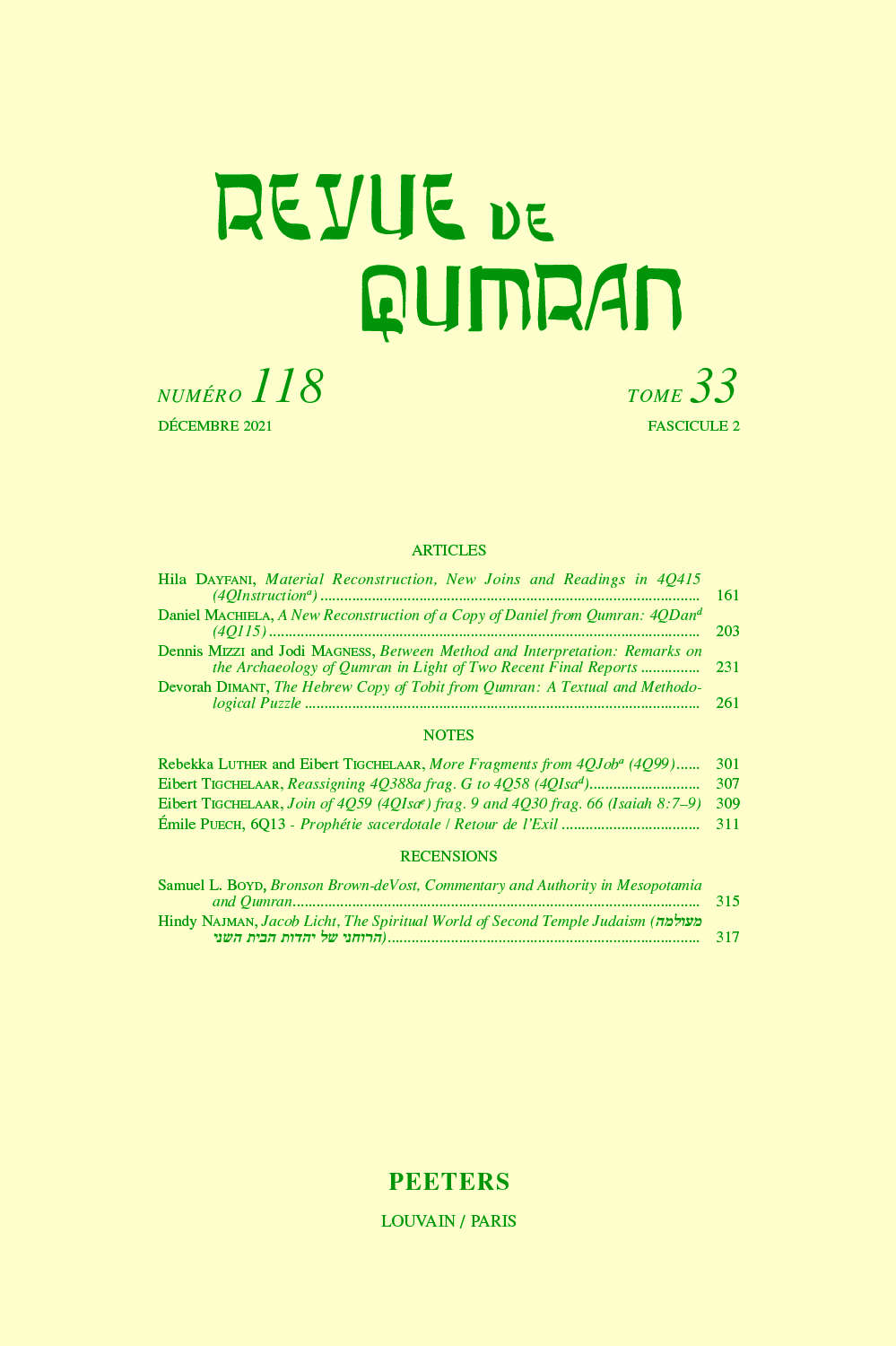 previous article in this issue previous article in this issue | next article in this issue  |

Preview first page |
Document Details : Title: Textual Growth, Midrash, and Anthropology in CD A 4:12-5:19 Subtitle: Some Aspects of Ruaḥ (ha-)Qodesh and the Self at Qumran and Ancient Christianity Author(s): KISTER, Menahem Journal: Revue de Qumran Volume: 30 Issue: 2 Date: numéro 112, 2018 Pages: 265-292 DOI: 10.2143/RQ.30.2.3285634 Abstract : The article deals with several levels of CD A 4:12-5:19 and related texts. A textual scrutiny of this passage reveals the emergence of textual pluriformity as well as dimensions of the conception of the holy spirit. The author argues that two recensions of the Damascus Document were merged together in this passage. These recensions share the same phraseological framework, but not necessarily the content. It can be demonstrated that CD 5:6-7 and 5:11-12 are two variant elaborations of one biblical passage, Lev 20:25-26. These verses were interpreted as related to the holy spirit dwelling within human beings as if in God’s Sanctuary. The elusive conception of the indwelling holy spirit is discussed. Some dimensions of it are illuminated by passages in Christian and rabbinic literature (including Paul, Hermas, rabbinic midrash, and the Hebrew Testament of Naphtali) as well as a tiny Qumran fragment (4Q446 3). The holy spirit in these passages is a liminal entity between the divine and the human self, the component of human beings that belongs to the divine realm, either in related to Adam’s creation (Gen 2:7) or to the eschatological recreation (Ezek 36:25-27). |
|


